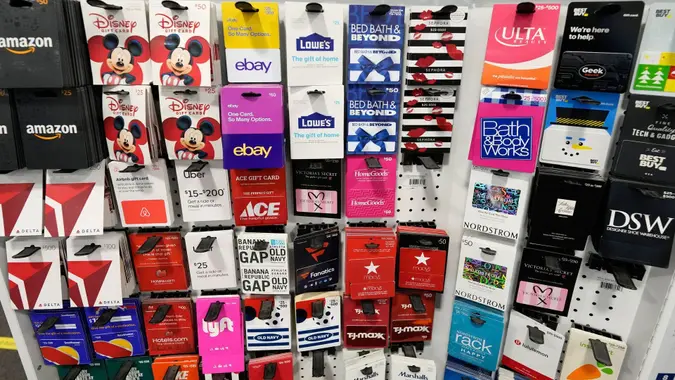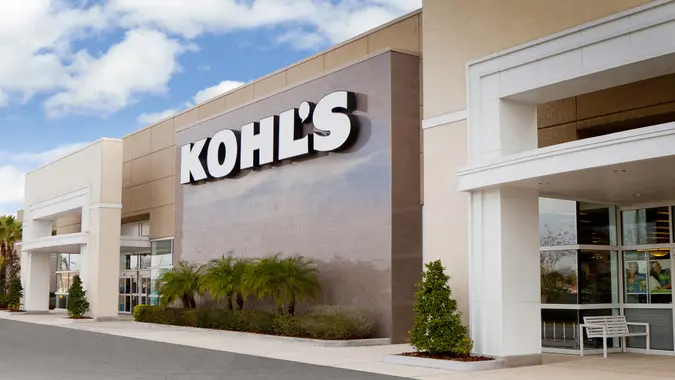No More Free Returns? What This Means for Unwanted Gifts

Commitment to Our Readers
GOBankingRates' editorial team is committed to bringing you unbiased reviews and information. We use data-driven methodologies to evaluate financial products and services - our reviews and ratings are not influenced by advertisers. You can read more about our editorial guidelines and our products and services review methodology.

20 Years
Helping You Live Richer

Reviewed
by Experts

Trusted by
Millions of Readers
You might be thinking of returning that holiday gift that you don’t really want or need. Yet you might also want to think twice before you pay a return fee for a gift you never wanted in the first place.
With the boom of ecommerce, many of us have become accustomed to ordering many items online. The ease of having everything delivered to our homes has become the newest way to shop. We’ve also been accustomed to free returns from many online retailers — but those days are quickly coming to an end in most cases.
Free Online Returns Are Ending
CNN Business reported that despite U.S. consumers have grown accustomed to free returns, a growing number of retailers are charging return fees, as returns are encroaching on retailers’ bottom lines.
J. Crew, Abercrombie, H&M, Macy’s and other similar companies have all added shipping fees for mail-in returns. In addition, about 81% of merchants are now charging their customers a fee for at least some form of returns.
Even one of the largest retailers, Amazon, is now charging its customers a $1 fee if they choose to return items to a UPS store when there is an Amazon Fresh grocery store, Whole Foods or a Kohl’s department store closer to their delivery address (Amazon owns Fresh and Whole Foods and has a partnership deal with Kohl’s). The e-commerce giant has even started marking “frequently returned” items on its website.
Customers Are Returning Items More Than Ever Before
The National Retail Federation reported that in 2022 alone, about $816 billion worth of retail merchandise was returned. That’s an average of 16.5% of total merchandise purchased.
When customers send their items back, retailers have to pay shipping fees. Oftentimes, returned items wind up back on store shelves, in liquidation warehouses and even landfills. In some cases, retailers are letting customers keep the product they want to return instead of shipping it back simply because it’s cheaper for the retailer to let the customer keep the item than it is to pay the shipping costs to take the item back. This usually applies to lower priced, cumbersome items like appliances, furniture or strollers.
Tips For Saving On Return Fees
As the cost of making returns rises, here are a few tips to save yourself from having to pay return fees:
- Think Carefully Before Buying An Item: Before you make your next purchase, consider whether or not you’ll actually end up keeping it after you buy it (or, if you really even need it at all). Thinking ahead before you buy can make a big financial difference.
- Regift Your Unwanted Purchase Instead: Instead of spending money on return fees for an item you don’t want or need anymore, consider gifting it to someone in your life who might like it. This will save you both on return fees and time shopping for another gift later on.
- Return In Store To Avoid Fees: If you purchased an item online and the retailer allows for in-store returns, consider doing this instead if it saves you on return shipping fees.
 Written by
Written by  Edited by
Edited by 
























